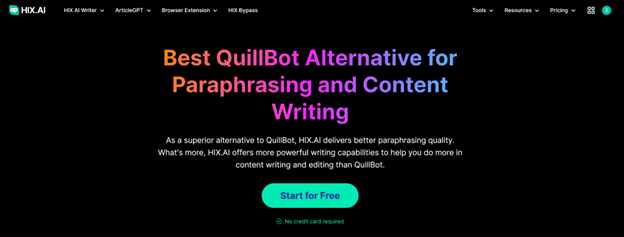Popup (popup in English means “to appear unexpectedly”) is an interface element of the site page that appears on the visitor’s screen. It can popup after some action (getting to the site, clicking on a link, pressing a button, when hovering the mouse over the “cross” next to the tab) or without any user request at all.
The main purpose of the popup tool is to attract the attention of users and encourage them to further interact with the resource. Suppose you are invited to a children’s party, and you are looking for a gift. After several hours of unsuccessful wanderings online, you notice the corresponding store. Gotcha.
A popup on the site offers 500 bonuses on the first purchase of a subscription. Not bad! Click “Get”. As you can see, everything is simple: the store captured your attention, “lured” you with bonuses, and prompted you to take action.
Usually, the popup is in the center of the page, but it doesn’t have to be. You can place it anywhere: in the corner on the right, left, top or bottom. Everything depends on other interface elements, so it’s best not to overlap the text or important blocks like the search bar or the live chat widget.
Table of Contents
Why are popups a great way to grab attention?
This is due to a persuasion technique known as “pattern interruption” – when your attention, “lulled” by a certain rhythm or sequence of a narrative, is suddenly aggressively attracted to something unexpected. You often experience this effect when watching movies, comedy shows, and even in important negotiations.
When it comes to content and email marketing, “pattern interruption” is most effective when the reader is already set up to solve the problem and continue the interaction (newsletter subscription, purchase, etc.).
Why do we need popups?
1. Collection of contact information
How will it increase sales? You will have a base of interested potential customers. A successful automated sales funnel or salesperson will incentivize them to become your customers.
2. Informing clients
How will it increase sales? A potential client will be notified about changes in work or other company news, so they will contact your company, taking into account innovations.
3. Keeping a visitor on the site
How will it increase sales? Seeing the discount, the site visitor will still stay on it and get acquainted with the products in more detail. So, you may want to make a purchase, because a good product + a discount = a good offer.
4. Customer Surveys
How will it increase sales? This way you will get to know the attitude towards your product better and will be able to improve it. As soon as it meets the requirements of the target audience, you will have even more buyers.
5. Building a subscriber base
How will it increase sales? A potential client will get closer and closer to getting to know your company and product. After all, interesting content will warm it up and in time will induce a purchase. Also, he will always be aware of all your promotions, and some of them will certainly take advantage.
Types of popups
Popup tools may look different, and the types of placements also vary. Some of them cover the entire screen and restrict access to content. Others occupy only part of the screen: at the bottom, at the top, or in the middle, and do not affect the operation of the site.
- Popup in the center of the screen
- Popup full screen
- Popup at the bottom of the screen
- Popup at the top of the screen
- Popup with a timer
- Popup blocking content
Advantages and disadvantages of popup tools
Advantages:
- Quickly attract the attention of site visitors
- Additional business advertising
- Ability to collect audience contact information
- More personalization options
Disadvantages:
- Design Features
- Increased brand distrust
- Ad blocking extension
Checklist for the right popup
1. Purpose of Launch
For sales, the main page, a page with a price list or prices (product card), and a shopping cart become the best place to activate a popup tool.
For lead generation, popup tools are recommended to be activated on the main pages, information pages, and landing pages of the site.
To distribute traffic from pages with low conversion, activate popups on pages about the company / about us, information pages (about a delivery, guarantee, payment), and blog pages.
2. Show Moment
If you have discounts, special offers, or promotions, show a popup tool at the entrance.
For all other options, it is important to choose the right moment. This can be the exit from the product page/catalog section to the main page, exit from the basket with the goods to the main page, etc.
3. Popup tool styling
- The optimal size of the popup tool at the start of the visit, as well as after a certain time has passed – 500×300 or 740×500 pixels
- The optimal size of the popup tool at the exit from the site is 900×700 pixels
- The CTA button should stand out from the background of the image, text, and other window design elements
- White space is a must for any popup tool. The text becomes more readable, the information is easier to digest.
- No more than two fields to fill out – a popup tool simplifies the action to the maximum. Do not load the user with a detailed profile. Name and contact are absolutely enough.
4. Text decoration
The title is a large, easy-to-read font that draws attention, separated from the body text by an indent.
Body text – clearly states the essence of the proposal, the short, font size does not force the user to look closely. Do not use a large number of different selections. It’s useless.
5. The essence of the proposal
CTA button – is it clear to the user what will happen after clicking the button? Does the user understand the essence of the offer?
Quantity/Time Limits – Is it clear to the user that the offer is limited?
“NOT!” Does the text use negation? It is not recommended to use negations in a short text. They create psychological barriers to making a decision.



![Best Free Mobile Remote Desktop App [iOS & Android] Free Mobile Remote Desktop App](https://techniciansnow.com/wp-content/uploads/2024/01/Free-Mobile-Remote-Desktop-App.jpg)




